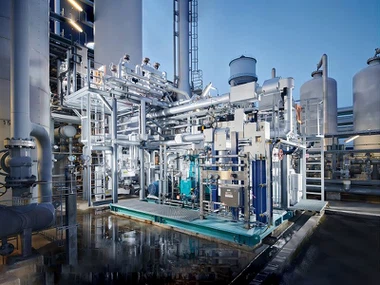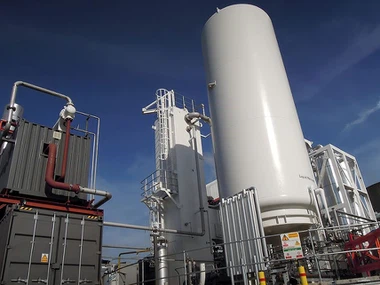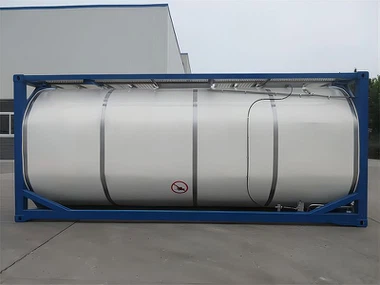Management And Maintenance Analysis Of Large PSA Medical Oxygen Production Equipment
May 30, 2025
Leave a message
Pressure Swing Adsorption medical oxygen production equipment has become a core technology in modern healthcare facilities, offering on-demand oxygen generation for critical care. As hospital reliance on PSA systems increases, so too does the necessity of effective equipment management and maintenance. Poorly maintained systems can lead to oxygen shortages, increased healthcare costs, and even jeopardize patient safety. This article discusses the management strategies, routine maintenance, and fault troubleshooting of large PSA oxygen generation systems, with special attention to optimizing operational efficiency and minimizing downtime.
1. Management of large-scale PSA medical oxygen production equipment
As an important part of the hospital gas supply system, the management of large-scale PSA medical oxygen production equipment is directly related to the continuity of medical services and the life safety of patients. A scientific and systematic management mechanism is the premise for ensuring the stable operation of the equipment. This section comprehensively explains the system construction, personnel management, operation monitoring, emergency plans, etc.
1.1 Construction of institutionalized management system
Establishing a sound institutionalized management system is the basis for the safe operation of equipment. Hospitals should form a closed-loop management mechanism based on national and industry standards and their own actual conditions. The management system should be evaluated and updated regularly to adapt to the development of new equipment and new technologies.
1.2 Equipment ledger and operation record management
All oxygen production equipment should establish a detailed ledger, including equipment model, factory number, purchase time, installation date, supplier information, maintenance records, fault records and spare parts replacement records. In daily operation, operators should fill in the operation log to record key parameters such as operation time, oxygen purity, adsorption pressure, temperature, current, voltage, etc., so that technical personnel can analyze and judge the operation status.
1.3 Operator configuration and training mechanism
Rationally configure operators with professional qualifications to ensure that there are at least 1-2 operators on duty who are proficient in the operation process of the oxygen production system in each shift. Hospitals should establish a complete training system, including pre-job training, on-the-job continuing education, annual technical assessment and emergency drills. The training content should cover the working principle of the equipment, operation process, fault handling, fire safety, gas leakage handling and other aspects to improve the comprehensive ability of personnel.
1.4 Intelligent operation monitoring and early warning system
With the development of information technology, more and more hospitals have introduced intelligent monitoring systems to remotely monitor and collect data for PSA oxygen production equipment. The system can realize 24-hour continuous monitoring of the equipment operation status and issue early warnings for problems such as oxygen purity, abnormal current, pressure difference deviation, and excessive flow. With the help of the Internet of Things, big data analysis and artificial intelligence technology, preventive maintenance can be achieved and the ability to predict faults can be improved.
1.5 Environment and safety management
PSA oxygen generators are generally installed in dedicated oxygen generator rooms. Their operating environment must be kept clean, well ventilated, and of suitable temperature and humidity (recommended temperature range is 5~35℃, humidity is less than 80%). It is strictly forbidden to store flammable and explosive items. Obvious safety signs should be posted around the equipment, safety passages and fire-fighting equipment should be set up, and a dedicated person should be appointed to be responsible for daily safety inspections and hidden danger inspections.
1.6 Emergency handling and backup system management
During the operation of the oxygen generator system, sudden failures or natural disasters may cause oxygen supply interruption. Therefore, a detailed emergency handling plan should be formulated and regular drills should be conducted. At the same time, it is recommended that hospitals configure backup oxygen generators (such as liquid oxygen tanks or bottled oxygen systems) and keep them in a state that can be put into operation at any time to ensure that the oxygen supply is not interrupted in an emergency.
2. Daily maintenance of PSA oxygen production equipment
Equipment maintenance is a key link to ensure the long-term and stable operation of equipment. The following are the main maintenance points for large-scale PSA medical oxygen production equipment.
2.1 Main unit maintenance
The main unit needs to regularly check the core components such as molecular sieve towers, compressors, valves and sensors. Lubrication, tightening of joints and inspection of wear should be carried out regularly.
Key points include:
Clean the filter to prevent blockage
Ensure the stability of air intake pressure
Check whether the pressure change of the adsorption tower is normal
Replace the adsorbent in time according to the running time
2.2 Air compression system
The compression system should be cleaned and lubricating oil and filter elements should be replaced regularly to maintain air purity and reduce the loss of equipment to impurities.
2.3 Cooling system
Effective cooling is essential for the stable operation of the equipment. Clean the heat exchanger regularly, check the working condition of the water pump, and ensure the efficient operation of the cooling circuit.
2.4 Oxygen storage system and pipelines
Oxygen storage tanks and pipelines should be regularly checked for corrosion and leakage, and pressure gauges and oxygen concentration monitors should be calibrated regularly to ensure the safety and reliability of the oxygen delivery system.
2.5 Control System
As the "central nervous system" of the equipment, the control system needs to regularly upgrade the software, detect sensor functions and perform power backup tests to prevent unexpected shutdowns.
3. Common faults and troubleshooting methods
Even with proper maintenance, PSA oxygen generators may still fail. Quickly discovering problems and taking effective treatment measures will help prevent accidents from expanding.
3.1 Host failure
Common problems include:
Oxygen purity fluctuations may be caused by molecular sieve failure or system leakage
Adsorption tower pressure imbalance
Valve jamming or sensor failure
Troubleshooting methods include gradually isolating the source of the fault, replacing suspicious components, and adjusting control parameters. Regularly calibrating flow meters and oxygen concentration analyzers can help detect oxygen purity abnormalities early.
3.2 Air system problems
If the air supply system has abnormal pressure and increased noise, it may be caused by filter blockage, lubricating oil contamination or compressor wear. The filter element should be replaced, the pipeline should be cleaned or the seal should be repaired in time.
4. Preventive maintenance and equipment upgrade
Preventive maintenance can effectively extend the life of the equipment and improve system reliability. It is recommended that hospitals establish a proactive maintenance mechanism, including:
Regular inspections every 30 to 60 days
Introducing intelligent monitoring systems to predict component fatigue
Stocking key vulnerable parts
At the same time, timely equipment upgrades, such as replacing energy-saving motors, installing intelligent sensors, and adopting automatic valve control systems, can significantly improve operating efficiency and reduce energy consumption.
5. NEWTEK: Leading the innovation of PSA oxygen production technology
NEWTEK Industry Group is a high-tech enterprise focusing on the research and development and manufacturing of gas systems. The company has many years of design and manufacturing experience. Its main products include PSA oxygen production, nitrogen, argon, acetylene, nitrous oxide, carbon dioxide and other gas generation devices and bottled systems. The products are exported to many countries and regions around the world.
5.1 Advanced PSA technology platform
NEWTEK 's PSA oxygen system adopts the world's leading technology, with high-purity output, adjustable flow, modular design and other advantages, and is widely used in hospitals, laboratories and industrial fields.
5.2 Strict quality and safety assurance
Each NEWTEK device is strictly tested before leaving the factory, and integrates safety modules such as automatic power-off valve, oxygen concentration alarm, and dual-tower adsorption system to ensure safe and stable operation of the equipment.
5.3 One-stop solution and global service
NEWTEK provides integrated solutions from design, engineering, installation to after-sales service. Its multilingual technical support team provides remote diagnosis, operation training and maintenance services to customers in more than 60 countries around the world.
With continuous innovation, efficient service and globalization strategy, NEWTEK is becoming a reliable oxygen system solution provider for the global medical industry.
6. Conclusion
Large-scale PSA medical oxygen production systems have become essential basic equipment in modern hospitals. Scientific management and standardized maintenance are the prerequisites for ensuring its stable operation and ensuring the safety of patients' oxygen use. By formulating standard operating procedures, regular maintenance, and configuring intelligent monitoring systems, medical institutions can significantly reduce equipment risks and extend their service life.
Excellent companies such as NEWTEK are promoting the continuous upgrading of PSA oxygen production technology, and are helping hospitals around the world build safer, more efficient and smarter oxygen supply systems with advanced equipment and perfect services. In the future, the medical industry's dependence on oxygen systems will only continue to increase. Only by continuously strengthening management and maintenance can the sustainable development of equipment operation be achieved.










